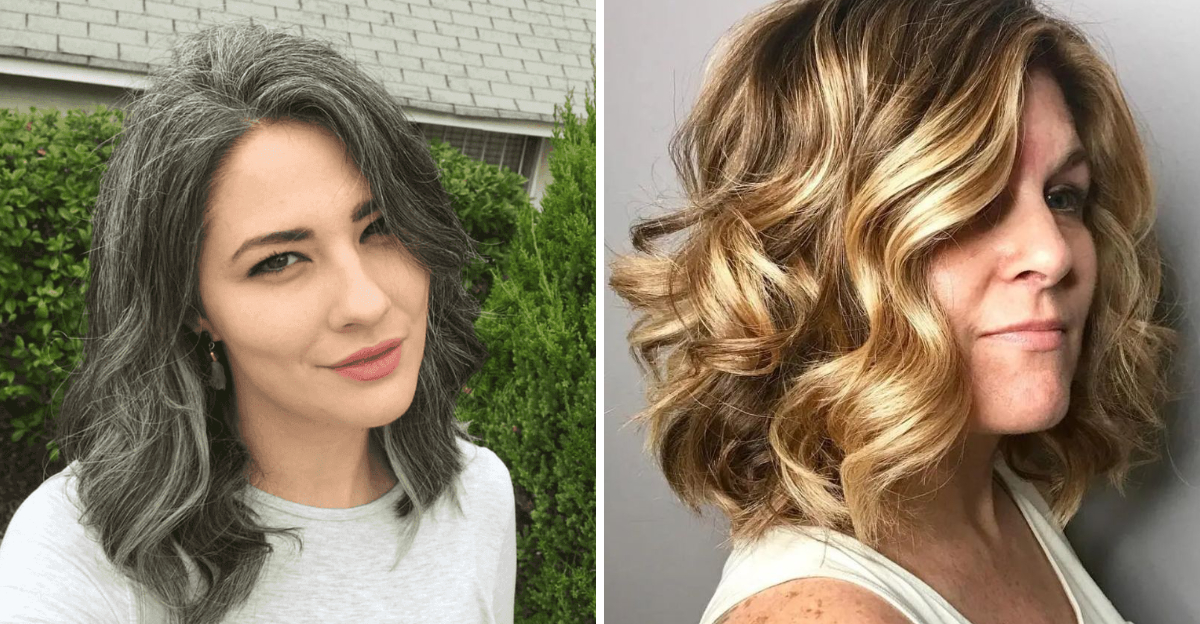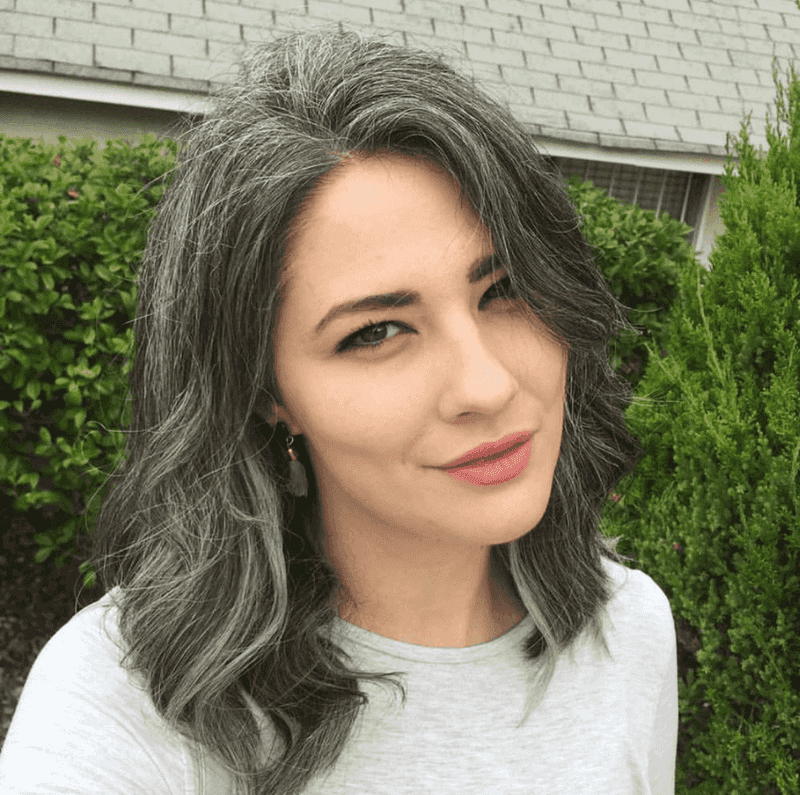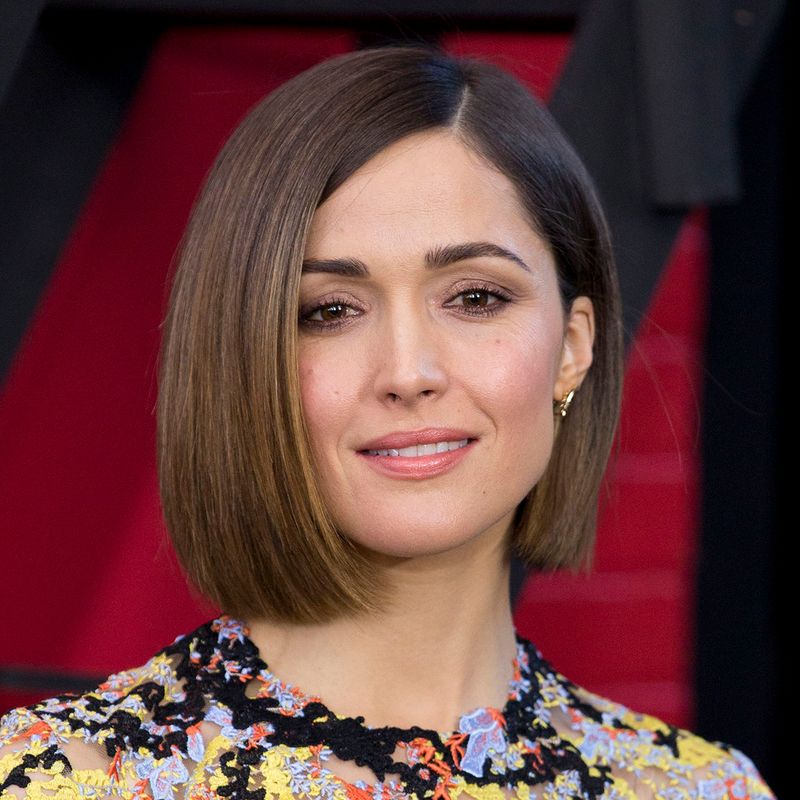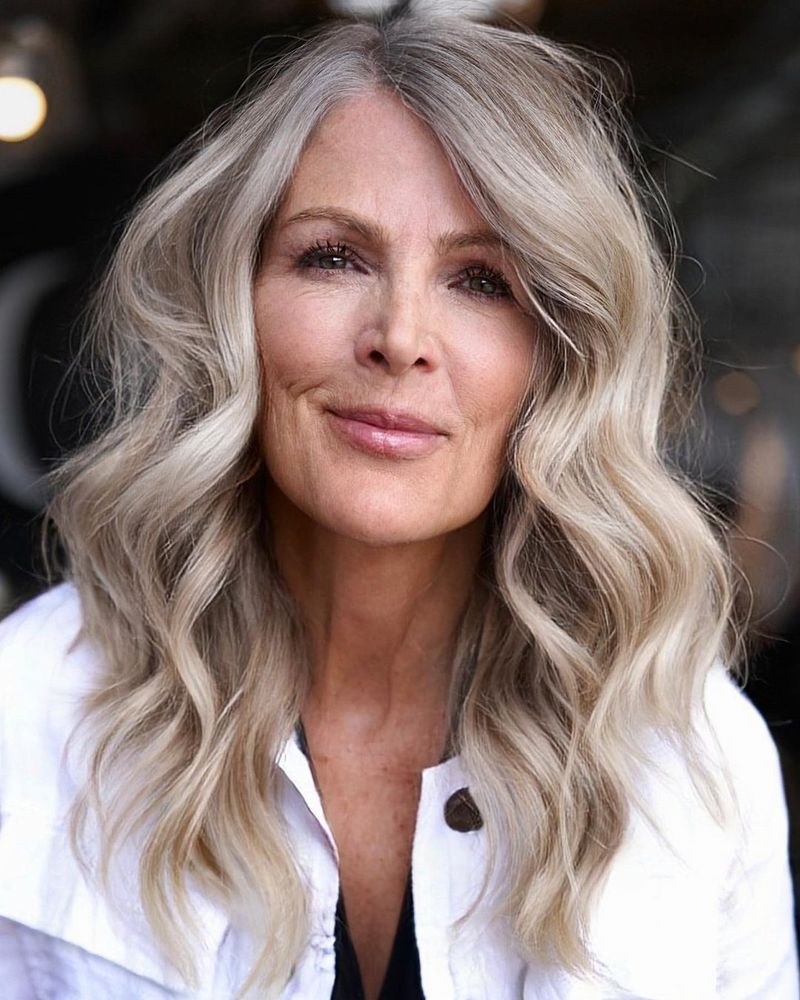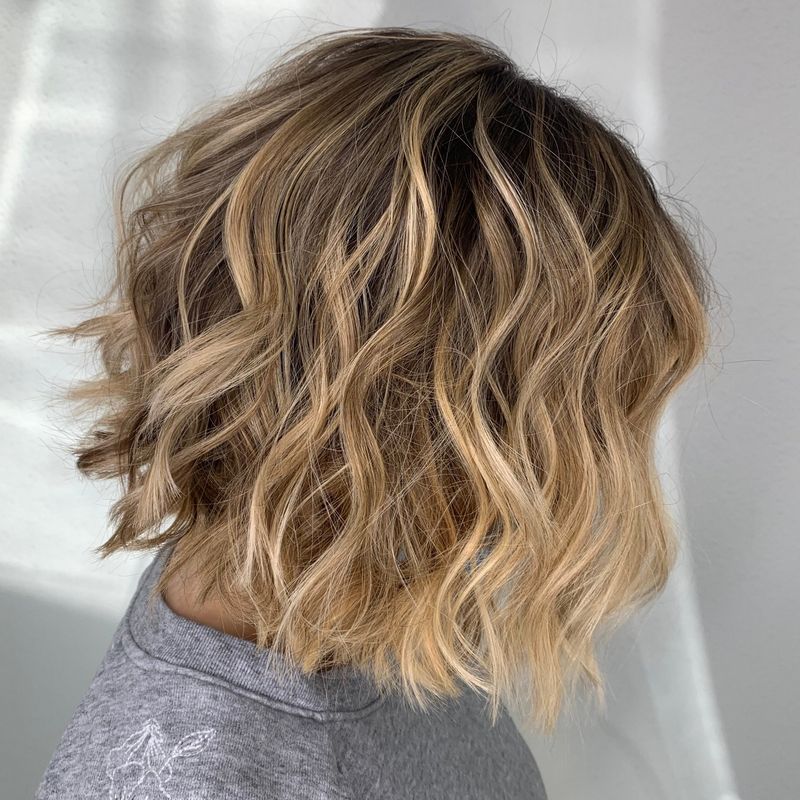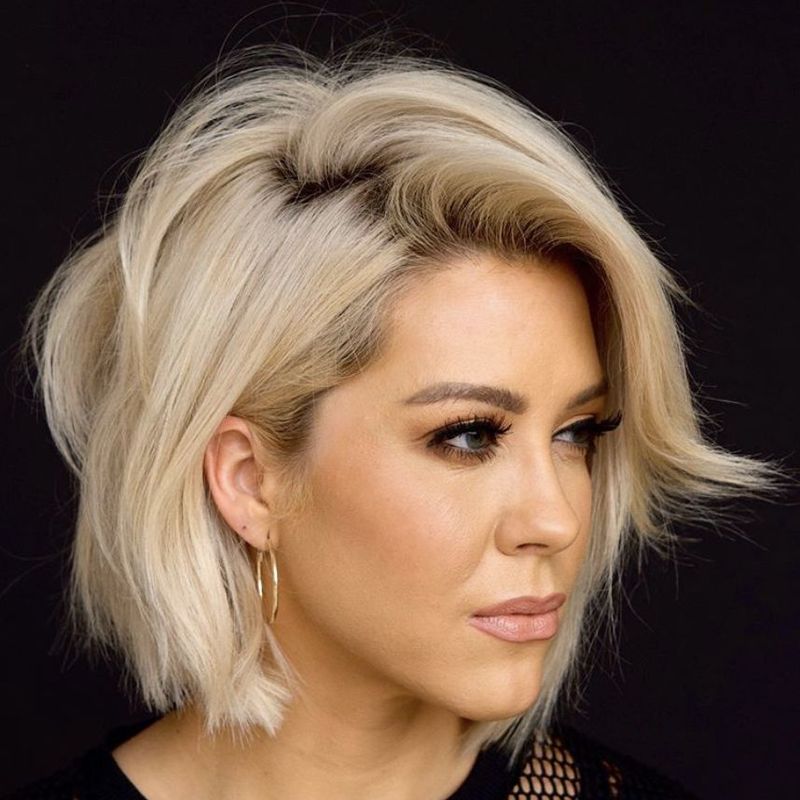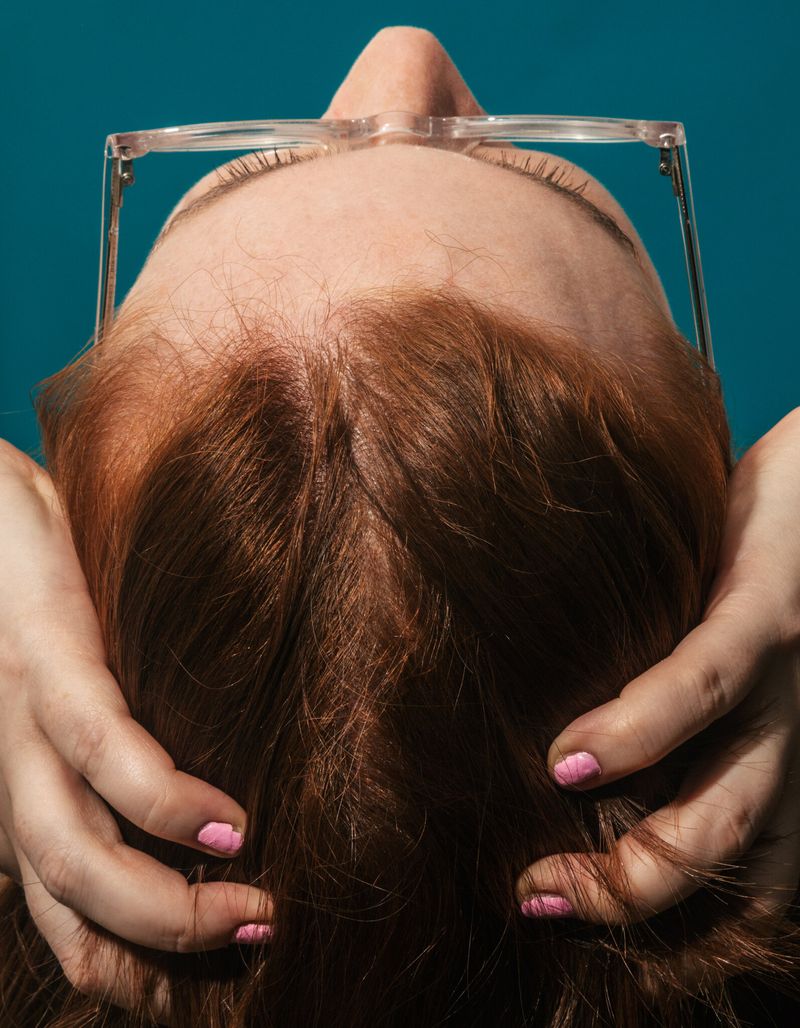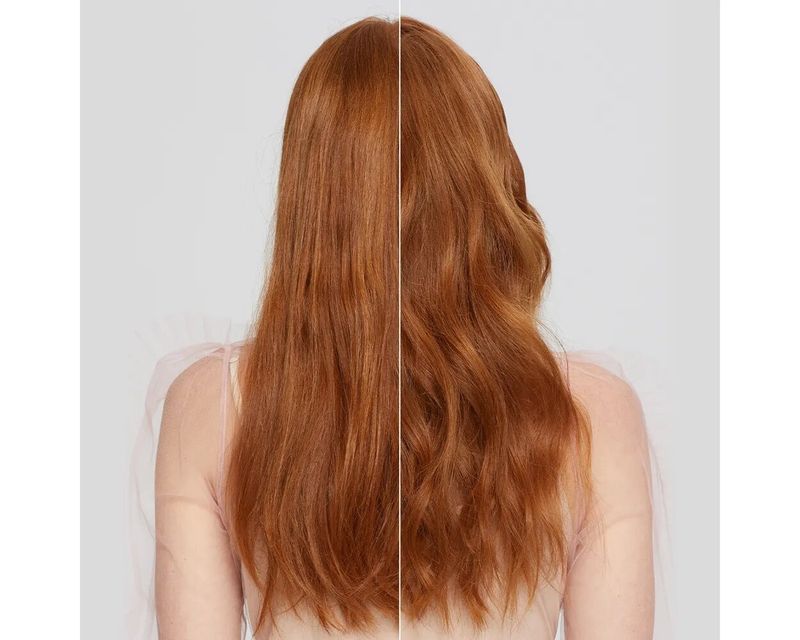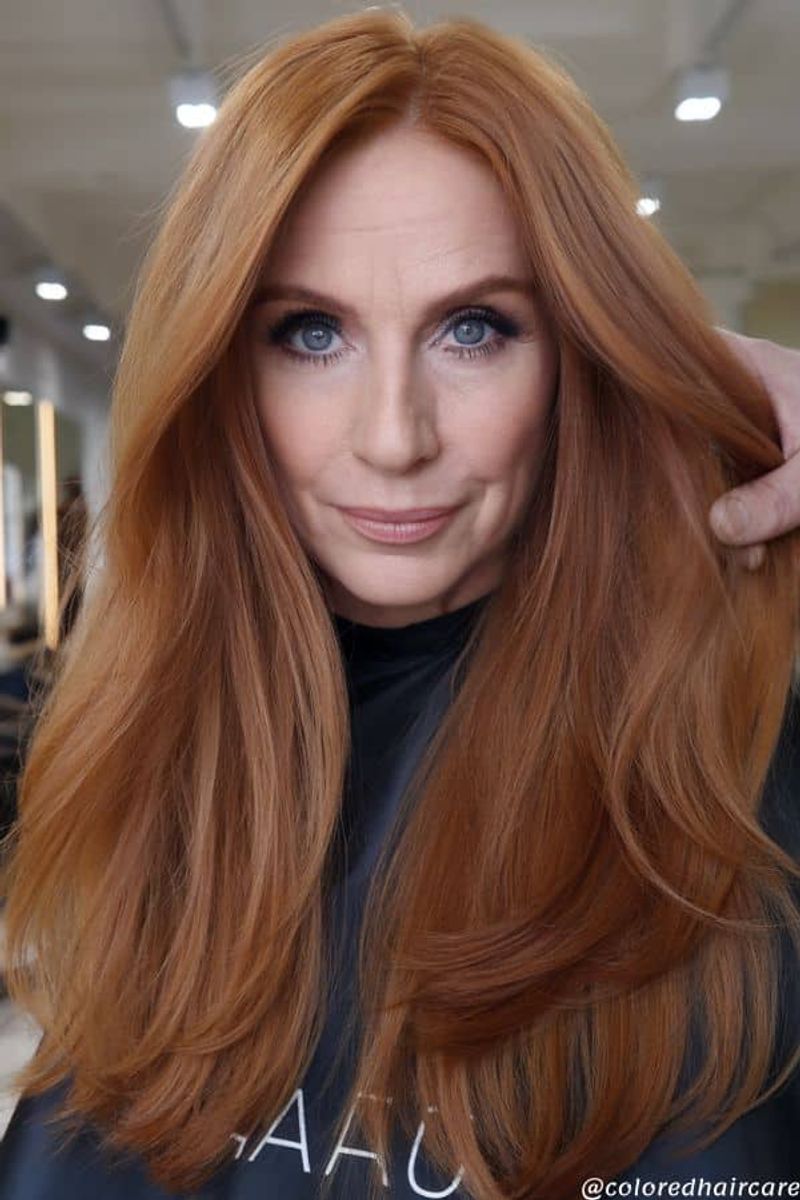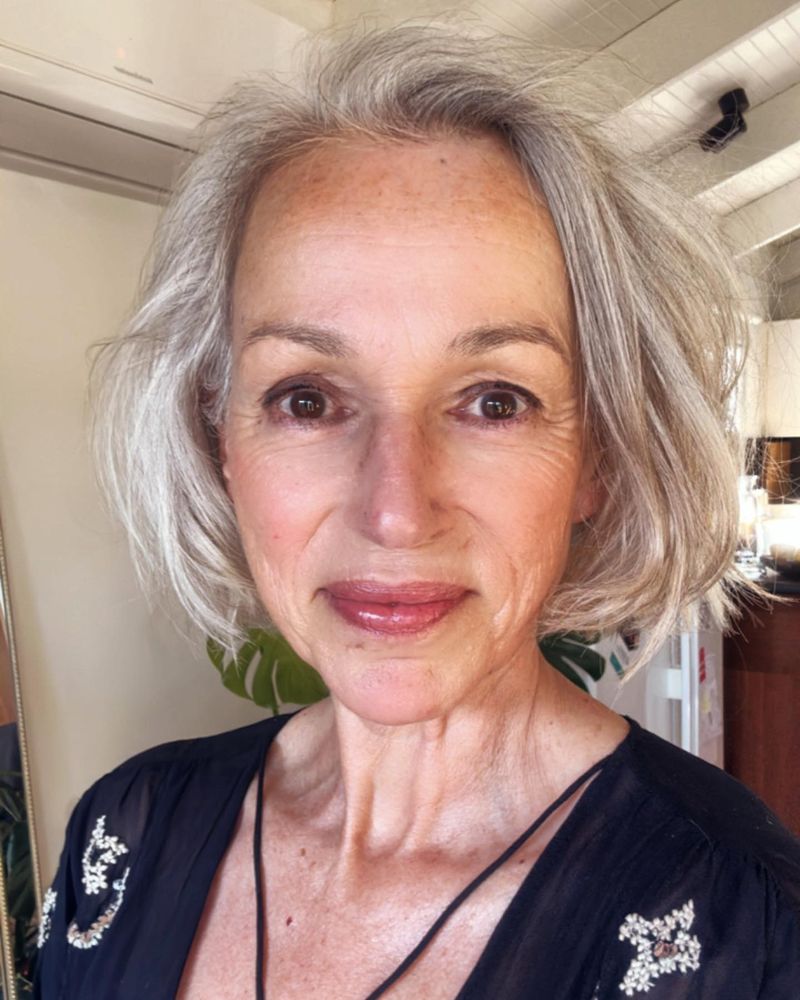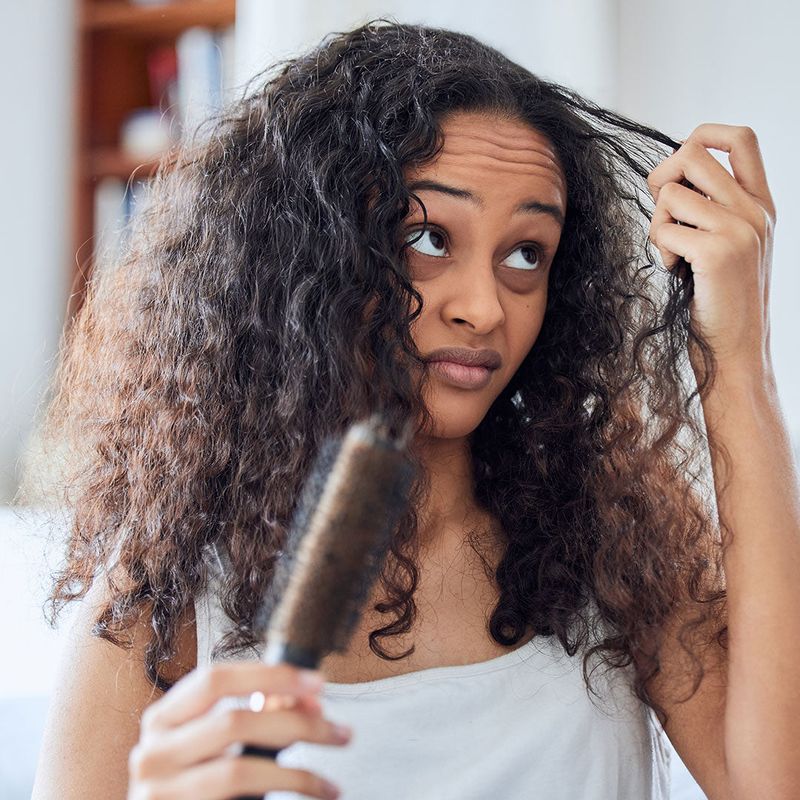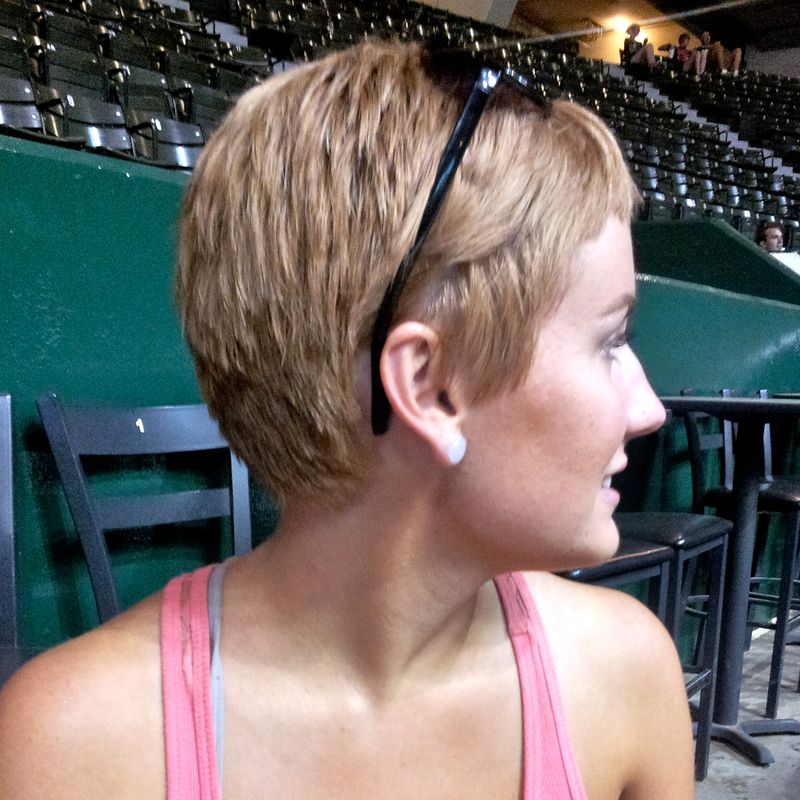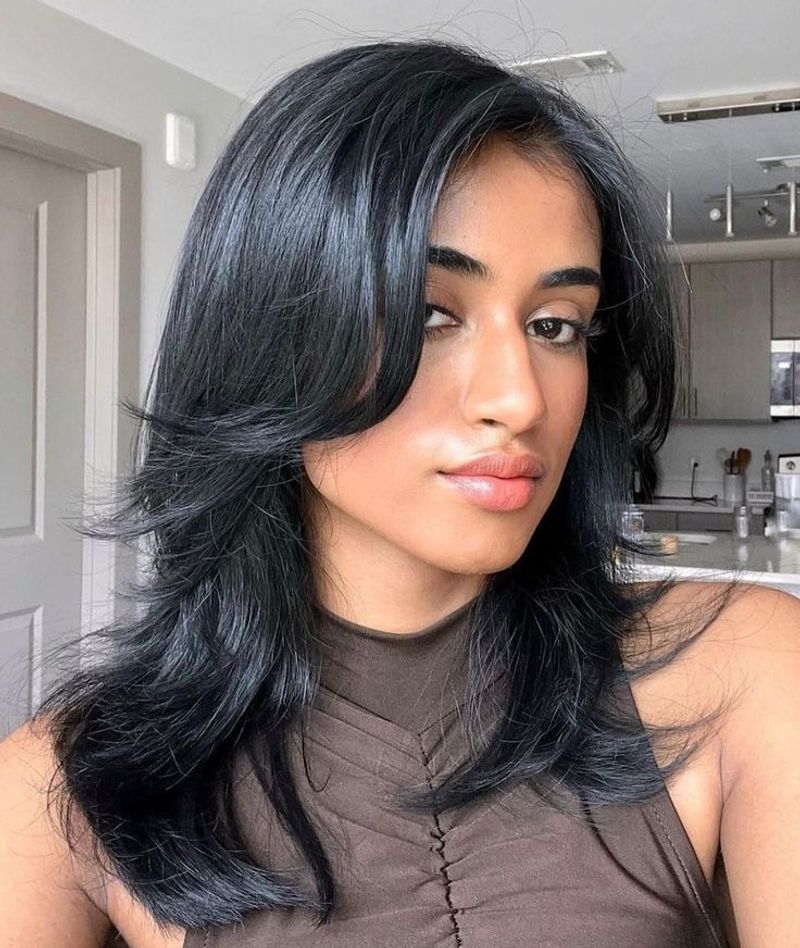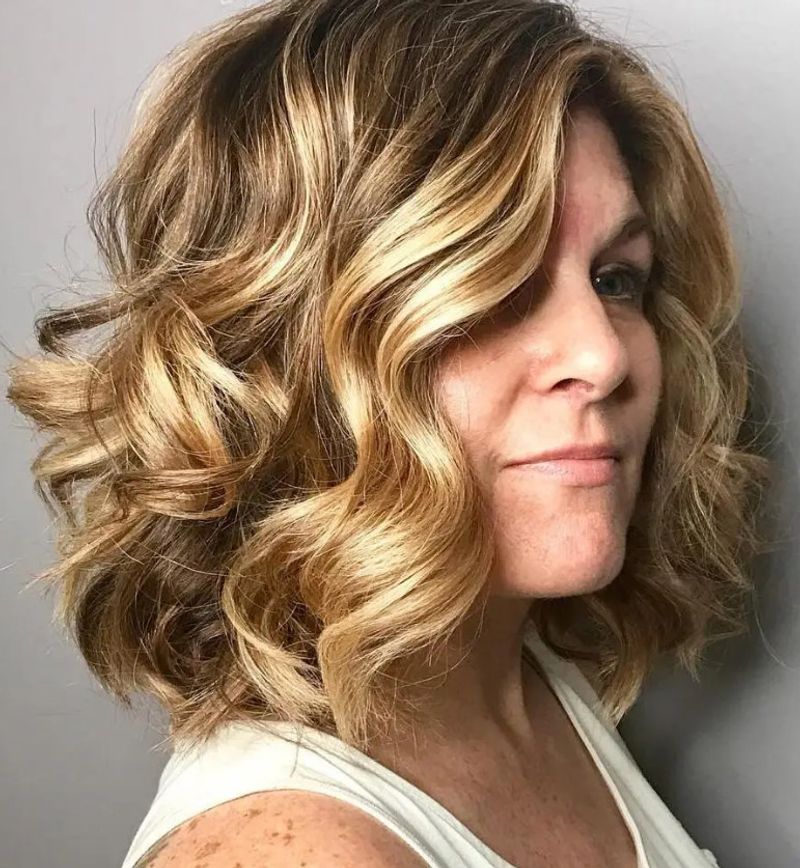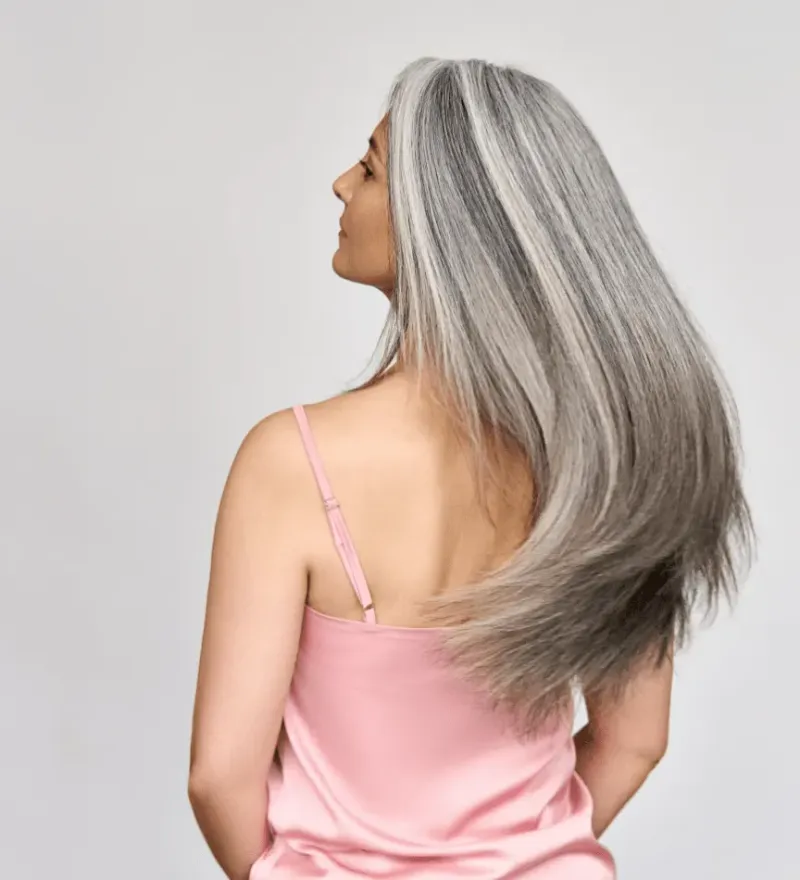Hair transforms as we age, presenting new challenges when we hit our forties. The styles and colors that once worked perfectly might suddenly seem off, while our hair’s texture and health undergo surprising shifts. Understanding these changes can help you navigate this new chapter with confidence and style, turning potential frustrations into opportunities for reinvention.
1. Graying Gracefully Isn’t Always Easy
The appearance of gray hairs can feel like an overnight ambush. One day you’re plucking a lone silver strand, the next you’re wondering when your head became a salt-and-pepper shaker. Embracing gray requires mental adjustment alongside practical changes to your hair care routine.
Gray hair has different needs—it’s often more wiry and resistant to color. Many women feel conflicted between covering grays to maintain their familiar look or embracing this natural transition. Either choice demands new products, possibly new stylists, and definitely new confidence to navigate the sometimes bumpy road to silver foxdom.
Related: -7 Straight-Hair Problems No One Talks About And 8 Easy Fixes That Shine
2. Thinning Hair Becomes a Reality
Remember that thick ponytail you used to swing around? Hormonal changes after 40 often lead to noticeable thinning, especially around the crown and part line. Your once-reliable styling techniques might suddenly fall flat—literally.
Volumizing products that worked in your thirties may not deliver the same results now. Finding new ways to create the illusion of fullness becomes a daily creative challenge. Learning to work with less hair rather than against it leads many to discover shorter cuts that maximize volume while minimizing the appearance of thinning areas.
3. Chemical Processes Hit Differently
That perm or color treatment you’ve been getting for years? It might suddenly leave your hair feeling like straw. After 40, hair becomes more porous and less resilient to chemical processing. Coloring may require more frequent touch-ups yet cause more damage.
The double-edged sword of maintenance versus health becomes sharper with each passing year. Many women find they need gentler formulations and more intensive conditioning treatments. What worked for decades might need complete reconsideration, forcing you to research new products and techniques when you thought you had your routine perfected.
4. Texture Changes Happen Without Warning
Straight hair suddenly developing waves or curly hair becoming straighter isn’t uncommon after 40. Hormonal fluctuations don’t just affect thickness—they can completely alter your hair’s fundamental texture. Learning to style what feels like someone else’s hair on your head requires patience and experimentation.
Products that once worked perfectly may now sit uselessly in your bathroom cabinet. The trial-and-error process of finding new styling methods can be expensive and frustrating. Many women feel like they’re starting from scratch, learning how to manage their hair all over again decades after they thought they had it figured out.
5. Youthful Styles May No Longer Work
That long, flowing hair that framed your face beautifully at 35 might age you at 45. The harsh reality is that some youthful styles start working against you, drawing attention to facial changes rather than complementing your features. Letting go of a signature look you’ve maintained for decades can feel like losing a part of your identity.
Many women struggle with this emotional attachment to styles that no longer serve them. Finding age-appropriate alternatives that still feel true to your personality becomes a delicate balancing act. The right cut can take years off your appearance, but the journey to discovering it often involves some uncomfortable moments in the stylist’s chair.
6. Scalp Issues Surface Unexpectedly
Suddenly dealing with an itchy, flaky scalp when you’ve never had dandruff before can be alarming. Hormonal changes affect oil production, often leading to drier scalp conditions after 40. Products that worked fine for decades might now cause irritation or buildup.
Finding the right shampoo becomes a scientific experiment rather than a pleasant shopping experience. The balance between treating scalp issues and maintaining hair appearance gets increasingly difficult. Many women find themselves juggling medicated products for scalp health with others designed to maintain their hair’s appearance, creating a complicated and often expensive hair care regimen.
7. Heat Styling Becomes More Damaging
The blow dryer and flat iron you’ve relied on for years suddenly seem to be destroying your hair. After 40, hair’s natural moisture levels decrease, making it more vulnerable to heat damage. Recovery time from styling damage lengthens dramatically. What once bounced back after a deep conditioning treatment might now take weeks to repair.
Finding heat-free styling alternatives often means embracing textures you’ve spent years fighting against. Many women discover they need to completely reimagine their daily styling routine, trading convenience and familiar results for gentler approaches that preserve their hair’s increasingly fragile integrity.
8. Professional Colorists Don’t Always Get It Right
That hair color formula your stylist has used for years might suddenly turn brassy or ashy in all the wrong ways. Mature hair absorbs and holds color differently, requiring expert adjustments many colorists overlook. Finding someone who truly understands how to color aging hair can involve disappointing trial and error.
Many women discover their longtime stylist lacks specialized knowledge about mature hair needs. The colors that flattered you at 35 might wash you out or look harsh at 45. Softening and adjusting tones becomes crucial, yet communicating these needs effectively to stylists can feel like learning a new language when you’re already struggling to recognize your changing reflection.
9. Hormone Fluctuations Cause Hair Loss
Perimenopause brings unexpected challenges, including shocking amounts of hair in your shower drain. Hormonal shifts can trigger temporary but dramatic shedding phases that no amount of special shampoo seems to fix. The emotional impact of seeing more scalp than you’re used to can be devastating. Many women report that hair loss affects their confidence more profoundly than other aging signs.
Medical interventions exist but often come with their own complications and side effects. Navigating the world of topical treatments, supplements, and prescription options becomes yet another aspect of midlife requiring research, patience, and acceptance of what you cannot fully control.
10. Frizz Becomes Your Unwelcome Companion
Even if you’ve never dealt with frizz before, after 40 it might become your hair’s default state. Changing porosity levels mean hair absorbs moisture from the air more readily, creating frustrating frizz even on good hair days. Anti-frizz products that once worked like magic may now barely make a dent.
The battle against humidity becomes increasingly one-sided, with weather reports dictating your hairstyle choices. Learning to incorporate rather than fight certain textures becomes a necessary skill. Many women find peace only after accepting some level of frizz as part of their new normal, focusing on healthy-looking hair rather than perfection.
11. Recovery From Bad Haircuts Takes Longer
That impulsive short cut that seemed like a good idea? At 40+, you’ll be living with it much longer than you did at 25. Slower hair growth means mistakes stick around, sometimes for years rather than months. The psychological impact of a bad haircut intensifies when you know quick correction isn’t possible.
Many women report feeling trapped by haircut disasters that younger women might simply grow out quickly. Learning to work with what you have becomes essential. Hair accessories, strategic styling, and even topical growth products enter the conversation when patience alone isn’t enough to get through the seemingly endless growing-out phase.
12. Face-Framing Techniques Become Critical
The haircut that perfectly complemented your face for decades might suddenly emphasize features you’d rather downplay. As facial contours change with age, hair needs to adapt accordingly. Finding the right framing techniques often means abandoning old habits. Many women discover that the part they’ve worn since college suddenly creates shadows that highlight rather than hide emerging concerns.
Strategic layering and face-framing become more technical considerations requiring expert advice. The right cut can create the illusion of lifted features and restored volume in the face, while the wrong one can draw attention to exactly what you’re hoping to minimize.
13. Product Buildup Becomes More Problematic
The styling products you’ve relied on for years might start weighing down your hair instead of enhancing it. Aging hair often can’t handle the same amount of product without looking dull and lifeless. Clarifying treatments become essential rather than occasional. Many women find they need to completely detox their hair regularly to maintain any semblance of volume and movement.
Finding lighter alternatives to trusted products involves frustrating trial and error. The balance between getting necessary hold and body without creating buildup becomes increasingly delicate, often requiring more frequent washing when your scalp is simultaneously producing less natural oil.
14. Shine Becomes Harder to Achieve
Remember when your hair would gleam after a simple wash and blow dry? After 40, achieving that healthy shine often requires multiple specialized products and treatments. The natural reflective qualities of hair diminish with age as the cuticle becomes more raised and rough. What once looked glossy under any light may now appear dull despite your best efforts.
Finding the balance between treatments that add shine without weighing hair down becomes a precise science. Many women discover that less frequent washing combined with strategic oil treatments can help, but the effortless shine of youth remains elusive despite the growing array of products promising to restore it.
15. Confidence In Change Doesn’t Come Easily
Making a major hair change after decades with the same look requires courage that doesn’t automatically come with age. The mirror reflects not just a new hairstyle but a new chapter of life. Friends and family don’t always react supportively to significant changes. Comments like “I liked it better before” can sting more sharply when you’re already feeling vulnerable about aging.
Finding inspiration from appropriate role models helps build confidence. Many women discover that following age-appropriate hair influencers rather than 20-something celebrities provides both practical styling tips and the emotional reassurance that beauty evolution can be exciting rather than merely necessary.

